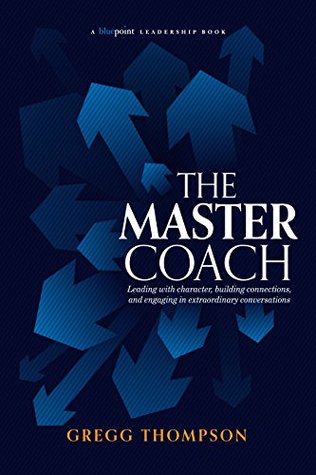Kindle Notes & Highlights
Read between
March 16 - March 28, 2019
presenting a compelling case that those who want to really have an impact in their coaching need to bring their entire selves into the coaching relationship and the coaching conversation.
‘Earning the Right to Coach.’
Coaching is a powerful interpersonal process that stimulates and equips a person to perform at a higher level while accelerating their development.
Coaching is a way of being, not doing.
As a coach, remember these three powerful words: You are sufficient. You do not need books and videos or anything else to back you up. Trust the process. Trust yourself. And most of all, trust the Talent. You are sufficient. Those three words sum up the essence of what every master coach knows.
I have been blessed with many such people in my life. I remember one day when I was walking through the plant with Arnie, a colleague of mine on a small engineering team. We had a coworker who was a real pain. He was obstinate, opinionated, and miserable most of the time. I knew that he annoyed Arnie as much as me, so I made a comment about him. “Yes, Gregg, you are right,” Arnie replied. “John is a hard man to love but he is worth it.” I was struck to the core by these few words. I was embarrassed. Arnie had not criticized me directly; he just reminded me of my own values. He was being a
...more
Counseling or therapy usually involves digging deep, revisiting past events to help someone heal a psychological wound and, in doing so, find relief from its negative effects on the present. Counseling looks backward, while coaching looks primarily toward the future, seeking clarity of purpose and aspirations that will give life and work greater meaning.
CHARACTER, CONNECTION, CONVERSATION: THE THREE DIMENSIONS OF COACHING
In its truest form, coaching at work is about helping people learn and grow, bring their very best talents to the tasks at hand, and thrive in the process.
The master coach sees other people as being full of potential. He or she always makes the assumption that human beings are naturally talented, innately resourceful, and able to learn and change. They are fully capable of making their own decisions and solving their own problems. They can seize their own opportunities.
What I’ve just described is what I call the coaching perspective. A perspective is a window on the world, a particular way of seeing and relating to other people. Foundational to all good coaching is a shift in perspective. Without authentically adopting a coaching perspective, no amount of skillful conversations or interpersonal processes will make you an effective coach.
THE ART OF SUSPENDING JUDGMENT
The human brain is hardwired to categorize things, events, and people based largely on surface information.
Once we’ve made up our mind about a person (consciously or not), it’s often hard to change our perspective. This is due to what psychologists call “confirmation bias,” where we look for information that supports our existing views and selectively ignore anything that
Each human being is born as something new, something that never existed before. . . . Each person has a unique way of seeing, hearing, touching, tasting, and thinking. Each has his or her own unique potential—capabilities and limitations. Each can be a significant, thinking, aware, and creative being—a productive person, a winner.
I’ve noticed that great coaches tend to have a positive attitude toward the world and the future—an attitude that is infectious.
William James once wrote that, “Pessimism leads to weakness. Optimism leads to power.”
According to Dr. Martin E. Seligman, former president of the American Psychological Association and Professor of Psychology at the University of Pennsylvania, optimists have three common traits. They view adversity in their lives as temporary and specific (not permeating all other aspects of their life). They view adversity in their lives as external and not entirely their fault. And they are not defeated by setbacks. Those who have an optimistic outlook will roll with the punches, will be more proactive and persistent, and will not abandon hope.
Truly optimistic individuals are able to move on and let go, without losing faith in themselves and in their future. It’s as though their vision allows them to see around the corner and what they see there, invisible to others, is better than what is. The coach is driven by the belief that they can make tomorrow better than today—for themselves and for others.
In fact, I’ve observed many times how even very young children, in their innocence, can be extraordinarily coach-like, simply by asking questions no one else would think to ask or by offering perspectives that are unencumbered by limiting ideas.
One of the most important outcomes of coaching—perhaps the most important outcome—is learning. Here is the key: The master coach is a very effective facilitator of learning without being a teacher.
The master coach creates a conversation environment in which confusion, disorientation, and anxiety are welcomed, nurtured and seen as precursors to learning.
This is the coach’s job—to see people’s potential for change, nurture their desire for it, help them shed light on the obstacles to it, and put it into practice until it becomes habit.
The mind, on the other hand, is amorphous. While it is deeply connected with the brain, it does not exist in physical form. It is, however, the essence of who we are, individually, as humans. The brain is a physical entity; the mind is the place where we experience our sense of self.
TOP 10 PRINCIPLES OF LEARNING, CHANGE, AND DEVELOPMENT


